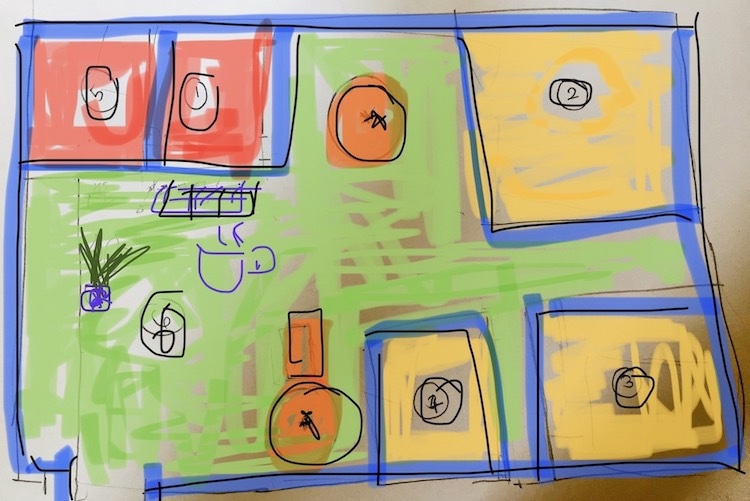The Secret to Virtual Working
Mar 31, 2020

With a background in journalism and communications, our newest team member, Rini Sinha, has dabbled in radio, news, newspapers and other media to further her mission as a storyteller. She reflects on her rendezvous with technology in her first online workshop with Ember. Her piece explores how technology, if used sensitively, can enhance and enable, not merely replace, human connection.
A morning call with the team, check-ins on WhatsApp, a project update on google docs, and a group brainstorm via video call. In the pre-coronavirus world, this was what my first day at Ember looked like - all done from my university room in Brighton. With its diverse team members and partners scattered all over the world, digital technology has always been central to Ember’s way of working.
This was an entirely new way of functioning for me. Brainstorms, meetings, working sessions - I associated it all with physical interaction. So, I was looking forward to my first online workshop - a session with CAFS, a Sri Lankan initiative that runs child-friendly community hubs providing a range of mental health services. When I read the mail trail wherein the Ember team asked CAFS members to keep coloured pens and paper handy as the workshop was going to be creative, I wondered to myself - with half the workshop attendants in London, half in Colombo, and me in Brighton, how is this even going to be possible?

That experience marked the beginning of my education in how to run meaningful and productive sessions online. With the Ember team spread across 4 countries, and their partners spread all over the world, working this way has always been necessary to keep Ember’s budget and carbon footprint to a minimum. Now, amidst the coronavirus crisis, the whole world is learning how to work online. So to help in some small way, I’m drawing on the Ember approach to online working to share some useful lessons on how to become friends with technology.
1. A video call is an intimate space and participants might feel self-conscious. Make sure to make everyone feel comfortable.
An initial hesitation, even after the first round of introductions, is normal. So an ice-breaking exercise will always help to make participants more at ease. Also, clearly establish the expectations from the session and make it specific. In this case, it was to understand how the CAFS space functioned.
The Ember team began the workshop by asking CAFS members to draw a floor plan of their building, just like the workshop would have proceeded in-person. This activity required informal conversation between participants, away from the eyes of facilitators. Ember team members switched off the cameras and mic, and asked the CAFS members to do the same, giving them space to have an organic discussion. This, for me, was the perfect example of the sensitivities one needs to have while using the online space.
3. Chatbox, video, audio - experiment and use all media that is available to stay connected.
When they were ready, the CAFS team shared a picture of their sketch on the chatbox and the participants explained what they had drawn.

4. Look out for prompts - laughter, gestures, eye contact - to make the session more inclusive.
Without physically being in the same room, one needs to be especially observant of group dynamics. If you’re on a group call and can’t see the faces of the people you’re talking to, it can be especially daunting to break into the conversation. In this case, the workshop started with a couple of participants taking the lead, while others seemed shy. Picking up on cues, the Ember team made an effort to invite others to contribute, addressing people by their name without putting them on the spot. This helped to dismantle the hierarchies of the question-answer session and transform it into a friendly group discussion.
5. Some things are out of our control. Don’t get frustrated. Be flexible and adapt.
Internet fluctuations are common, sometimes you might lose audio, sometimes cameras might not work, sometimes connection cuts out altogether. Be prepared for these uncertainties and adapt accordingly. If the network is slow, switch off cameras and just use audio or a chat box to facilitate the session. Above all, be patient and keep a sense of humour.
---
Digital technology offers so many exciting opportunities for new ways of working. This same session could have been done through a questionnaire, or even a phone call. Ember's team could have flown to Sri Lanka to deliver it in person. But in the face of climate change and budget constraints, we must be mindful of the choices we make. The lessons we learn now, while coronavirus makes remote working a necessity, will stand us in good stead when all this is over.
To think that technology in itself will automatically replicate face-to-face interactions is the biggest mistake that most of us make. The challenge is how we create moments that deliver meaningful human connection by creatively tweaking technology to suit our purposes.
That's the secret to success. At Ember, technology is not a second-hand substitute. We see it as a critical enabler of Ember's goals.
PS: I continue to work from India, so I'm practicing what I preach. While I haven't had the chance to meet the Ember team in person, I feel connected and in-sync with the team - even with the different time zones!